BoneScan
Medical Technology, Service Design (2021)
Rethinking the the workflow for locating pathological regions of interest in hard tissue samples, a collaboration with the University Medical Center in Göttingen
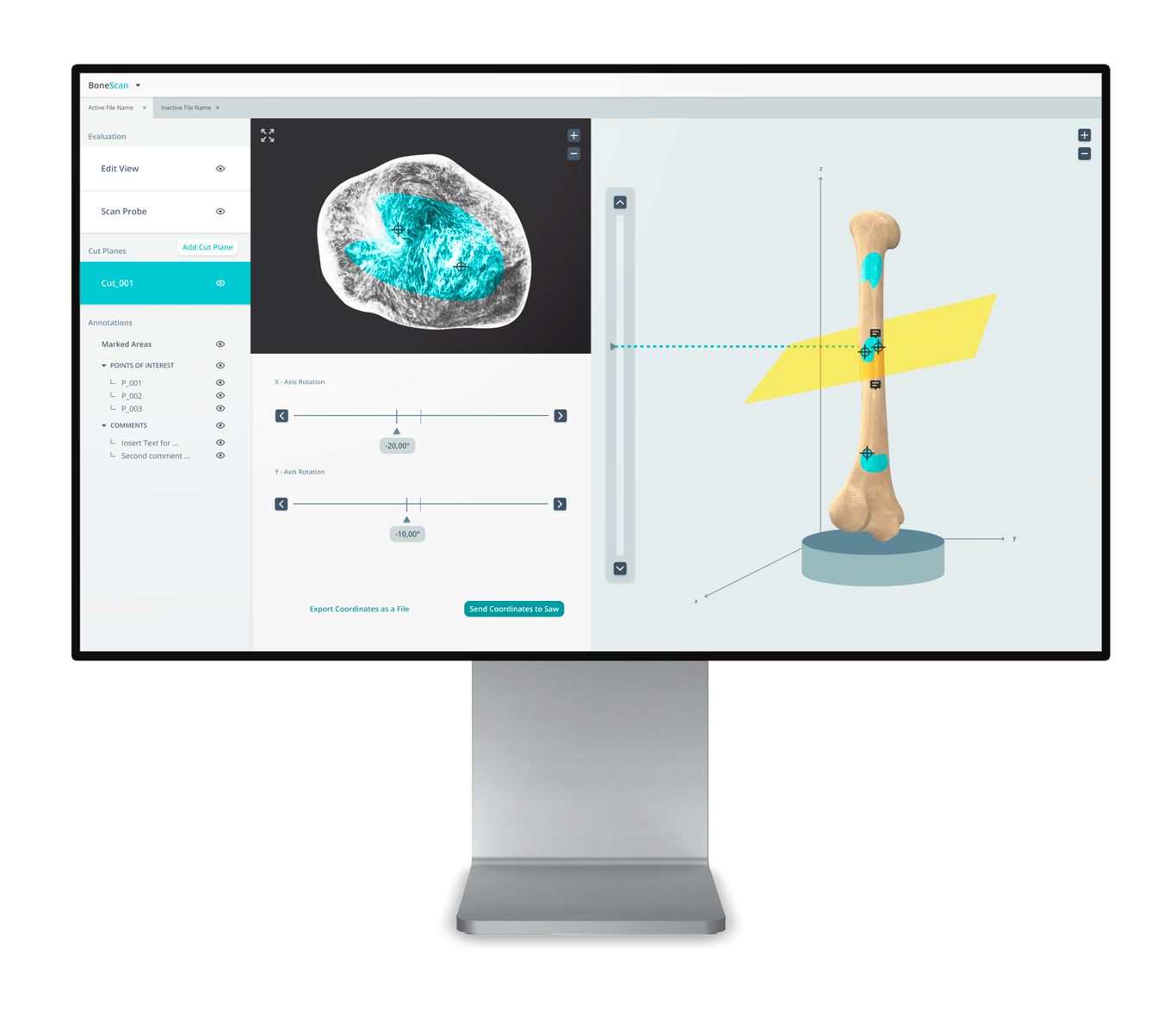
Context
July 2021, Integrative Project
M.A. Design HAWK Hildesheim
Supervision
Prof. Stefan Wölwer (HAWK)
Philipp Nolte (UMG Göttingen)
Methods & Tools
Shadowing, Hands on, Desk Research, Design Thinking, Mindmap, Brainstorming, Interviews, Card Sorting, Brainstorming, Scribbles, User Flow, Paper Prototyping, User Tests, High Fidelity Prototyping in Figma
Elevator Pitch
BoneScan offers medical assistants the opportunity to scan tissue samples for pathological anomalies and to identify and mark regions of interest. Doing so it is possible to determine exact coordinates for the subsequent laser cut and obtain optimal conditions for the examination under the microscope.
The user-friendly design ensures that the program can be operated with virtually no training. Due to the high level of accuracy and quality assurance the assessment process is massively accelerated: Time-consuming repetition loops of the individual work steps are no longer necessary. At the same time, the risk of irretrievably destroying valuable and unique structures in the samples – due to incorrectly placed cuts – is minimized.
Through Shadowing and Interviews we got to know the working methods of the medical assistants and personally went through the complete workflow from the CT of the bone to the examination of the sample under the microscope. This way we managed to obtain a deep understanding of the status quo and the limitations of the current workflow.
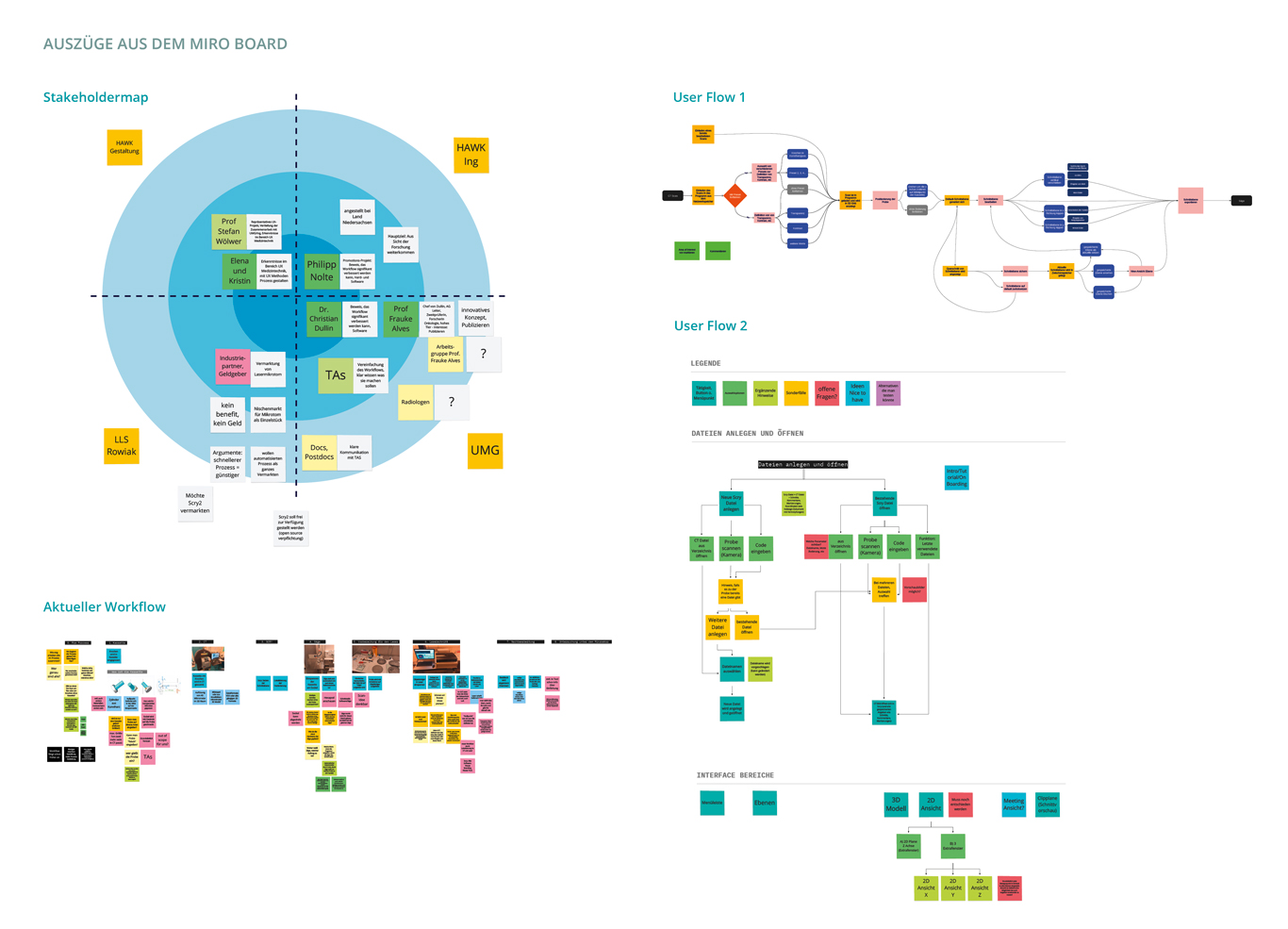
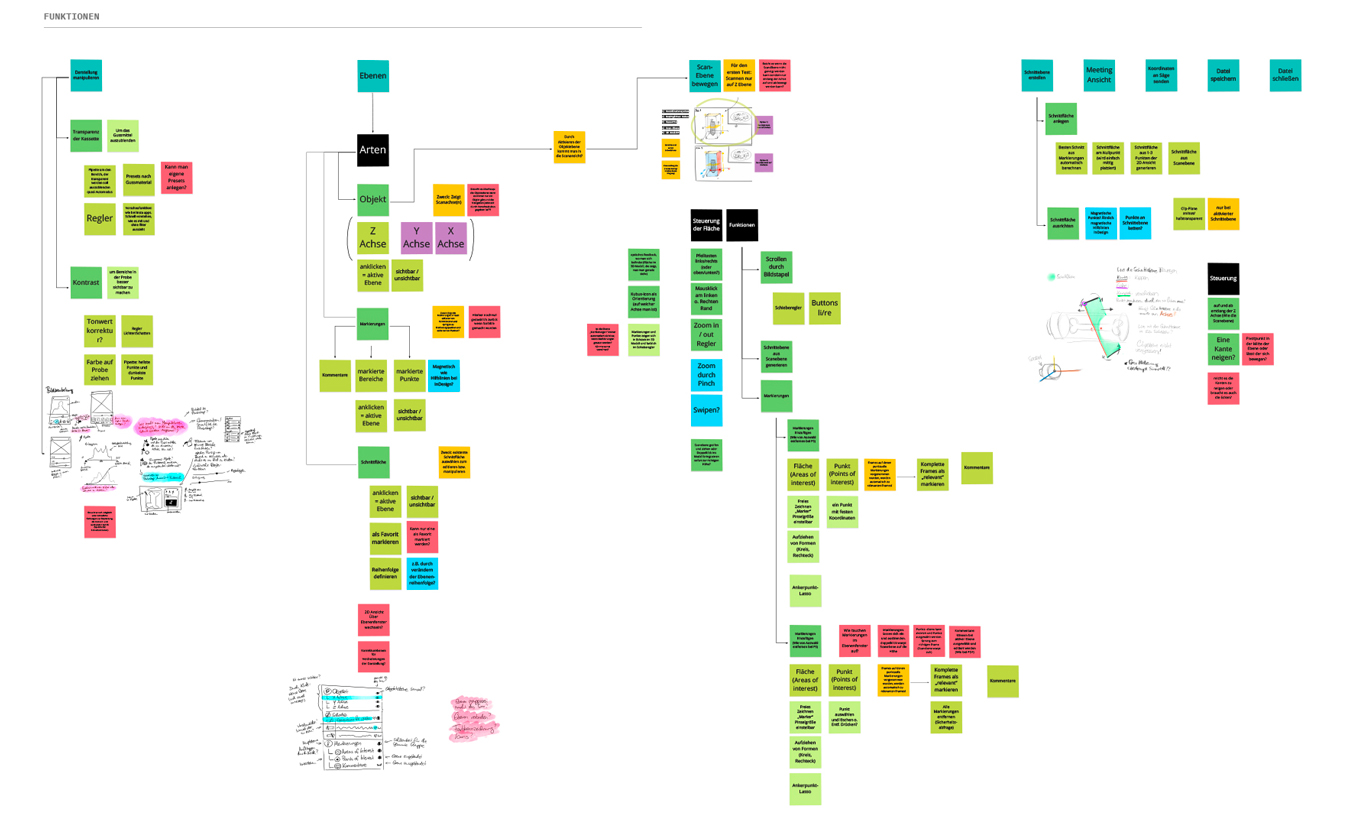
Insights of the desk and user research helped us to define requirements for our design. The ideas were clustered in a card sorting process.
With first Scribbles we tested and discussed different approaches to tackle the design challenge.
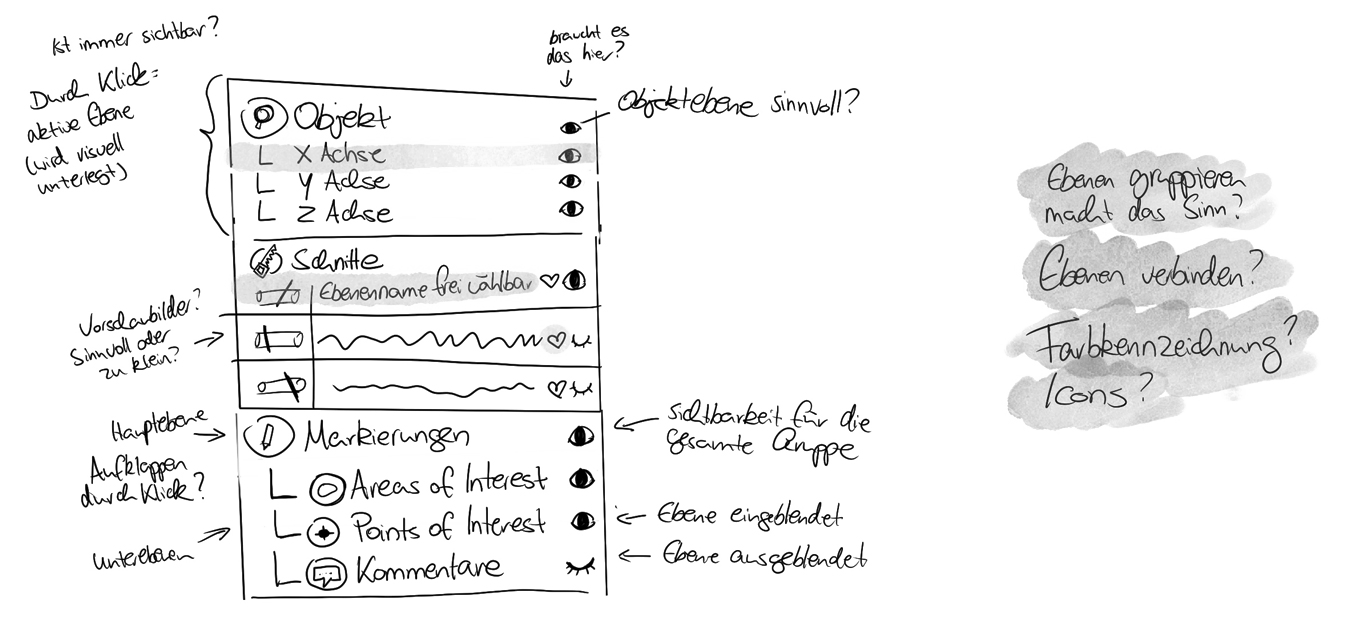
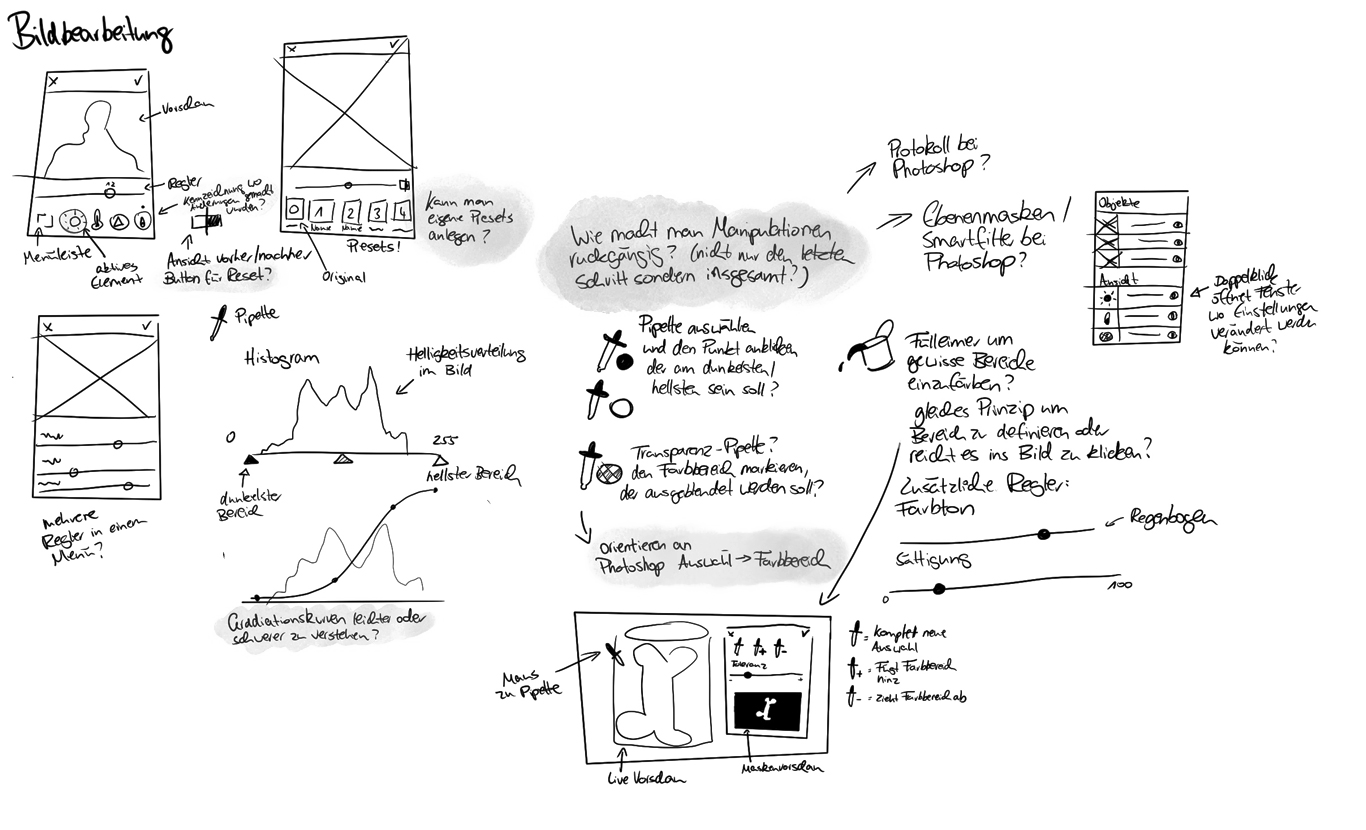
Based on our Scribbles and User Flow we sketched a first interactive Prototype using Procreate on the iPad and Marvel.
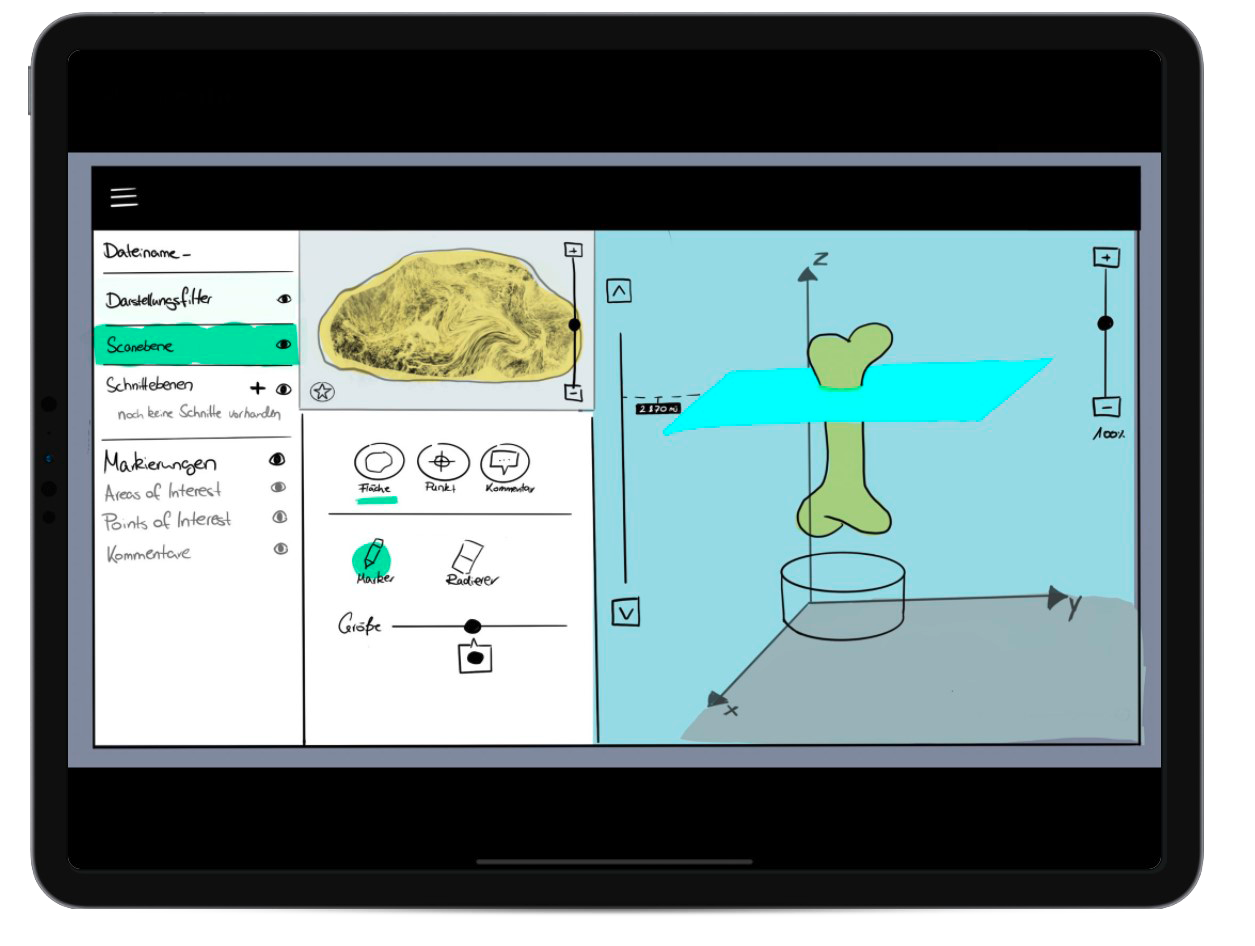

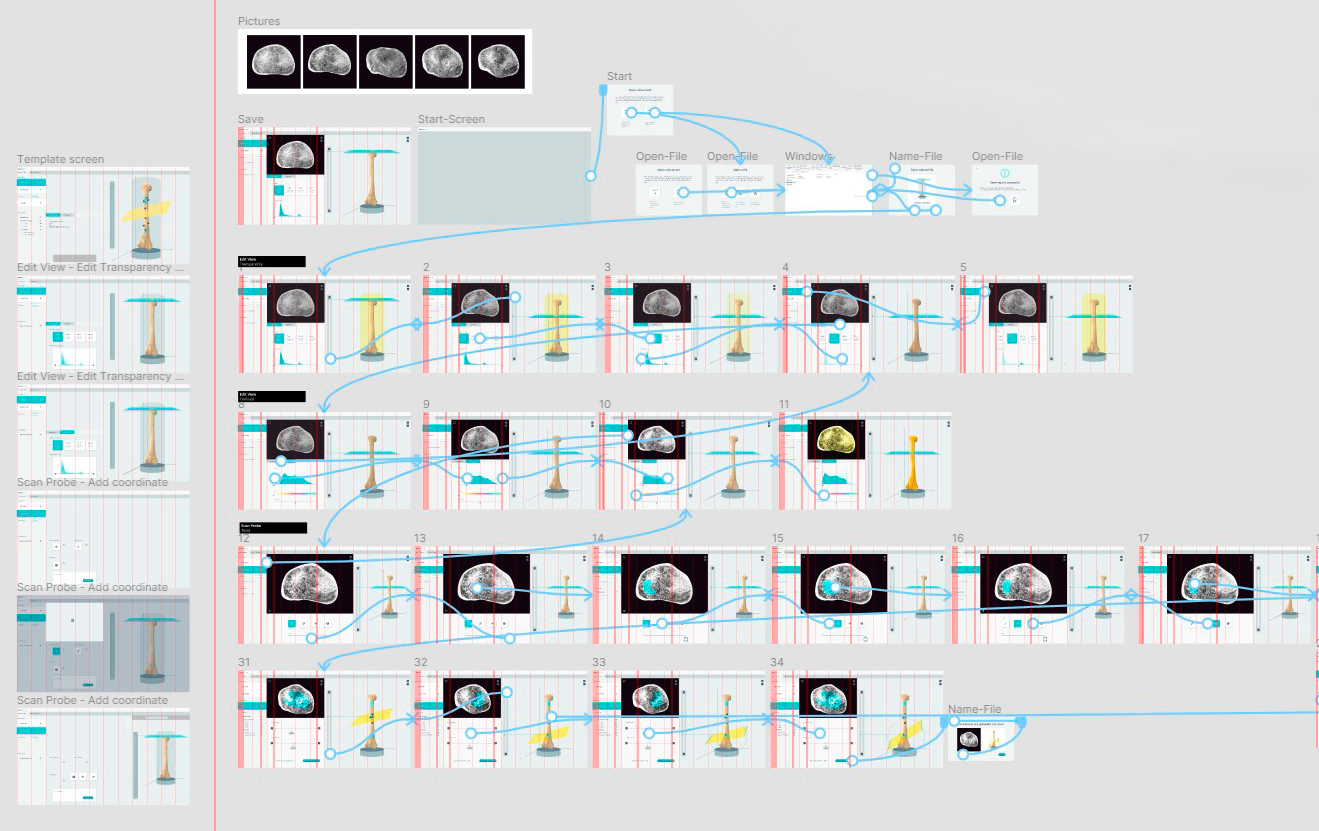
After first user tests of the paper prototype and further adjustments an animated high fidelity prototype was created in Figma.
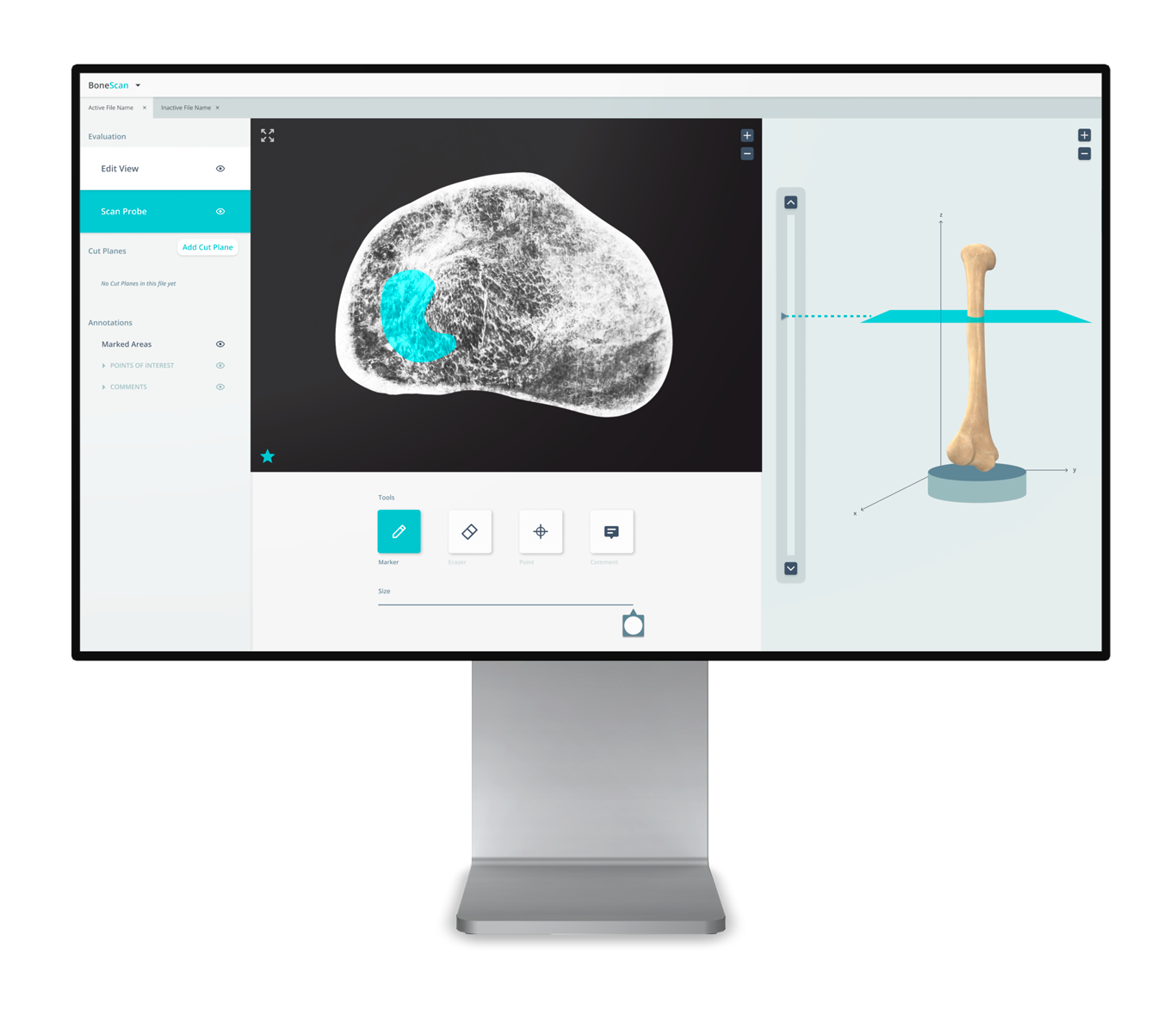
In a self explanatory two steps process the user can scan the bone sample and add markers and comments to regions of interest.
In the following step the cut plane can be placed manually or by using the previously positioned markers as anchor points. The preview of the cutting plane guarantees the best possible result.

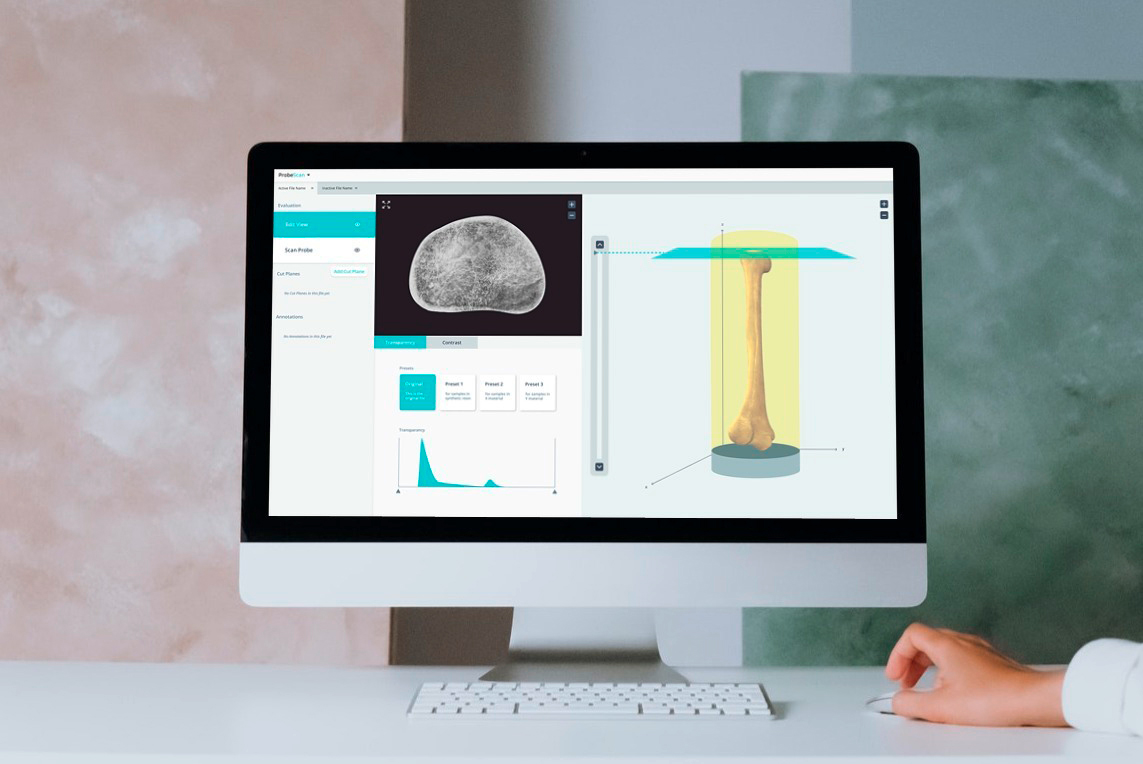
Let's have a chat!
© Elena Franke 2023
UX Design І Transformation Design